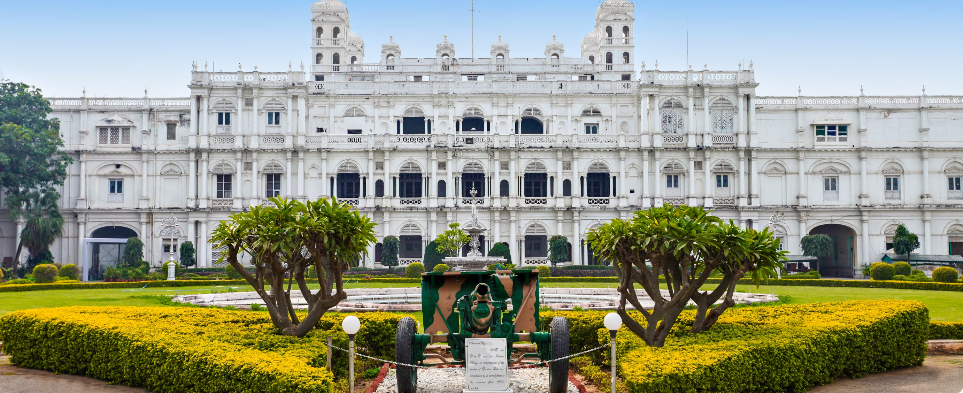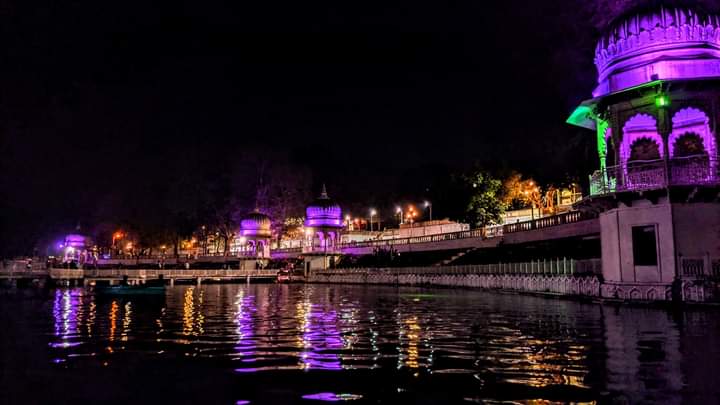Nestled in the heart of Madhya Pradesh, Gwalior is a city that seamlessly blends history, culture, and modernity. Steeped in rich heritage, Gwalior boasts a plethora of attractions that cater to the interests of history enthusiasts, art lovers, and adventure seekers alike. Here’s a step-by-step guide to exploring the gems of Gwalior, along with answers to five frequently asked questions.
Gwalior Fort – A Historical Marvel

Begin your journey in Gwalior by visiting the iconic Gwalior Fort. Perched atop a sandstone hill, this imposing fort offers breathtaking views of the city. Explore its intricate architecture, including the Man Mandir Palace, Gujari Mahal, and the mesmerizing Sas Bahu temples. The fort serves as a testament to Gwalior’s historical significance.
Jai Vilas Palace – Royal Extravagance

Indulge in the opulence of Jai Vilas Palace, the residence of the Scindia family. Marvel at the stunning architecture and visit the Scindia Museum housed within, which showcases a rare collection of artifacts, including the world’s largest pair of chandeliers.
Gwalior Biajatal

It seems there might be a confusion in the phrasing or terminology you’re referring to. “Gwalior” typically refers to a city in the Indian state of Madhya Pradesh, known for its rich cultural heritage, historic forts, and palaces. However, “Baijatal” doesn’t correspond to any specific landmark or place in Gwalior that I’m aware of. If you have a different term or specific place in mind, please provide more details, and I’ll do my best to assist you!.
The Magnificent Suraya Mandir: Gwalior’s Jewel of Serenity

Suraya Mandir, also known as the Sun Temple, is an ancient and magnificent temple located in Gwalior, Madhya Pradesh, India. This temple stands as a testament to the architectural brilliance of the bygone era and is dedicated to the worship of the Sun God, Surya.
Constructed in the 9th century, Suraya Mandir showcases a blend of architectural styles, primarily a fusion of Hindu and Persian influences. Its exterior walls are adorned with intricate carvings, depicting various scenes from Hindu mythology, celestial beings, and intricate geometric patterns. The temple is built using red sandstone, which adds to its striking appearance, especially during sunrise and sunset when the hues of the sun reflect upon its surface.
Explore Tombs of Tansen

The Tombs of Tansen, located in Gwalior, India, are dedicated to Tansen, one of the most renowned musicians in Indian history. Tansen was a prominent musician in the court of Emperor Akbar during the 16th century. His tomb complex includes the mausoleums of himself, his wife, and his spiritual guru, Swami Haridas. The architecture showcases a blend of Mughal and Hindu styles, reflecting the cultural fusion prevalent during that period. The tombs stand as a testament to the musical legacy and cultural heritage of Tansen and remain a revered site for music enthusiasts and historians alike.
Frequently Asked Questions:
Q1: What is the best time to visit Gwalior?
A1: The ideal time to visit Gwalior is during the winter months, from October to March, when the weather is pleasant, and outdoor exploration is comfortable.
Q2: How can one reach Gwalior?
A2: Gwalior is well-connected by air, rail, and road. The city has its airport, railway station, and is easily accessible by road from major cities in Madhya Pradesh and neighboring states.
Q3: Are there any local delicacies to try in Gwalior?
A3: Yes, Gwalior offers a range of local delicacies. Don’t miss the famous Gwalior kebabs, bedai (a local breakfast dish), and poha-jalebi, a popular street food combination.
Q4: Are there any cultural events in Gwalior that one should attend?
A4: Gwalior hosts the Tansen Music Festival, a renowned classical music festival, attracting artists and music enthusiasts from around the country. It usually takes place in December.
Q5: Is Gwalior family-friendly?
A5: Absolutely! Gwalior’s historical sites, museums, and cultural experiences make it a family-friendly destination. Ensure to include attractions suitable for all age groups, such as Gwalior Zoo and the Sun Temple.
